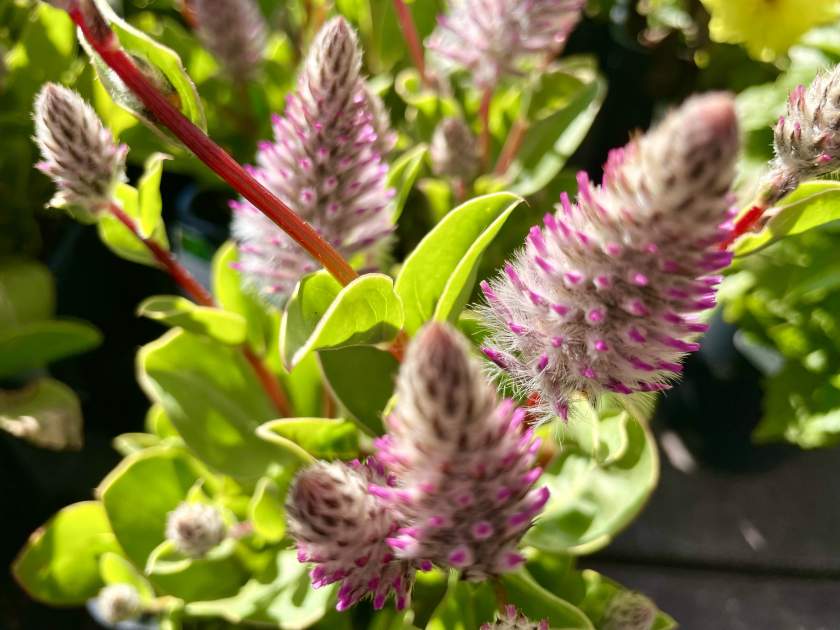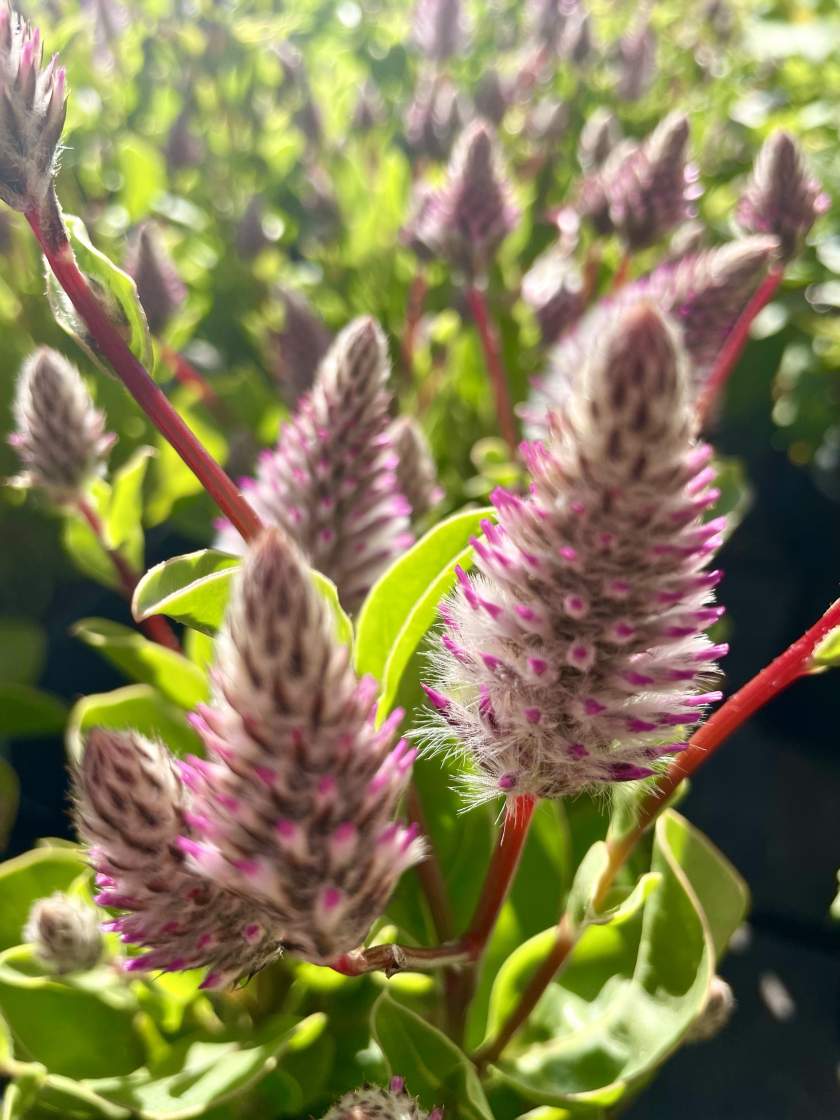Ptilotus exaltatus ‘Joey’: Vibrant Pink Mulla Mulla Delight
Background and Family Origin
Ptilotus exaltatus ‘Joey’, commonly known as Mulla Mulla, Lambs-Tails ‘Joey,’ Pink Mulla Mulla ‘Joey,’ or Pink Pussy Tails, is a captivating plant belonging to the Ptilotus exaltatus species. It is part of the Amaranthaceae family, which includes a diverse array of flowering plants. Ptilotus exaltatus is native to the drier central areas of Australia, where it thrives in arid and semi-arid regions.
Characteristics and Description
Ptilotus exaltatus ‘Joey’ is a spectacular, compact, and short-lived herbaceous perennial, often cultivated as an annual. It showcases masses of large, cone-shaped spikes composed of feathery flowers that can reach up to 3 inches (7 cm) in length. These magnificent blossoms, reminiscent of bottlebrushes, start their journey in a shimmering silver hue and gradually mature to a vibrant neon pink near the tips. The evergreen foliage consists of fleshy, elliptic, silver-green leaves that provide an attractive backdrop to the stunning flowers. ‘Joey’ is a bushy perennial with rosettes of oblong to lance-shaped, thick, wavy, grey-green leaves. It produces conical spikes adorned with small, silver-pink flowers.
Flowering Season and Fragrance
The blooming period of Ptilotus exaltatus ‘Joey’ spans from winter to summer, showcasing its resplendent flowers. If grown as an annual, it primarily flowers during the summer season. While this variety does not possess a distinct fragrance or aroma, its eye-catching and colorful flowers make it a visual delight in any garden or mixed container.
Cultivation of Ptilotus exaltatus ‘Joey’:
Sunlight
Ptilotus exaltatus ‘Joey’ thrives in full sun, requiring a minimum of 6 hours of direct sunlight per day. It can tolerate partial shade, but full sun exposure ensures optimal growth and abundant flowering.
Watering
Although ‘Joey’ is drought-tolerant, regular watering is necessary, particularly during hot summer months. Water the plant when the soil is dry to the touch, ensuring the water reaches the root zone. Avoid overwatering, as it can lead to root rot. Allow the soil to dry out slightly between waterings.
Soil
Ptilotus exaltatus ‘Joey’ prefers rich, sharply-drained soil. Well-draining soil is essential to prevent waterlogging and the onset of root rot. A suitable potting mix for container cultivation includes a blend of potting soil, sand, and perlite to promote drainage and aeration.
Pests and Diseases
Ptilotus exaltatus ‘Joey’ is generally resistant to pests and diseases. However, it may occasionally attract aphids and spider mites. Monitor the plant regularly and treat any infestations with an appropriate insecticidal soap or neem oil. Ensuring good airflow around the plant can help prevent common fungal diseases.
Propagation
Seed Propagation: The most common method of propagating Ptilotus exaltatus ‘Joey’ is through seeds. Sow the seeds in well-drained soil during the spring. Keep the soil consistently moist, and germination typically occurs within 2-4 weeks.
Division: ‘Joey’ can also be propagated through division. Carefully dig up the plant and divide it into several smaller clumps, ensuring each division has sufficient roots. Replant the clumps in well-drained soil, and provide regular watering to promote establishment.
Winter Care
In colder climates where Ptilotus exaltatus ‘Joey’ is not hardy, protective measures are necessary during winter. Shield the plant from frost by covering it with a frost cloth or by bringing it indoors to a suitable location with ad





